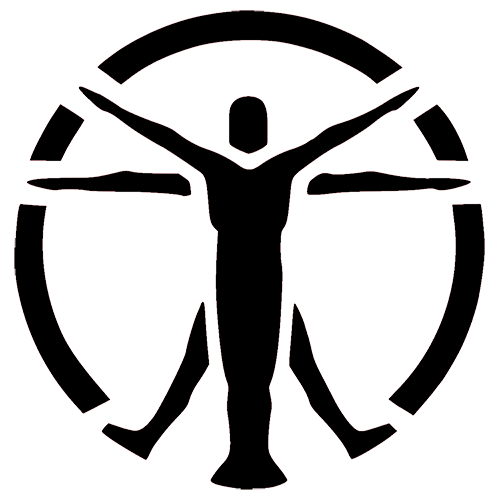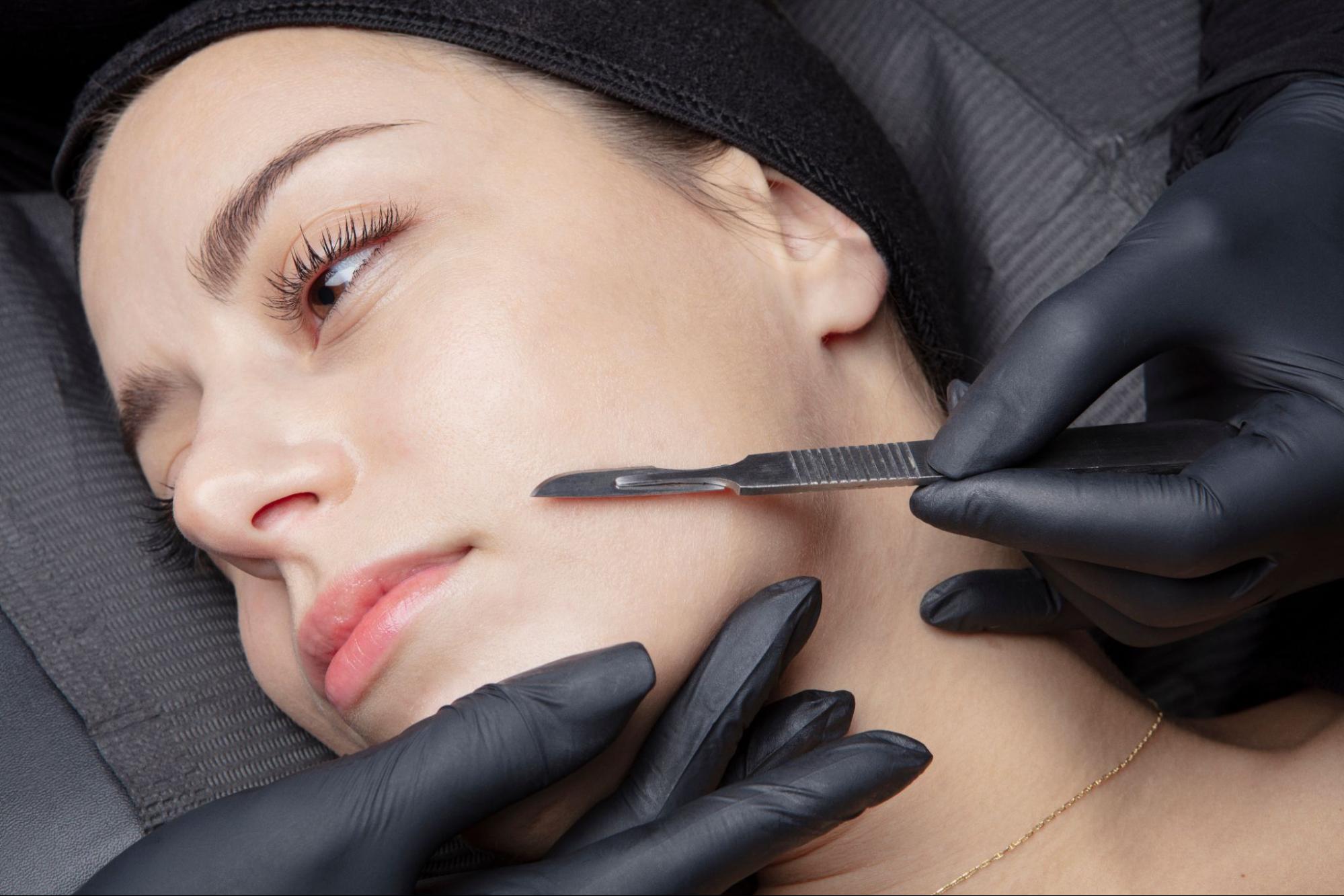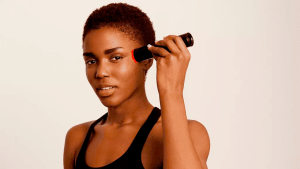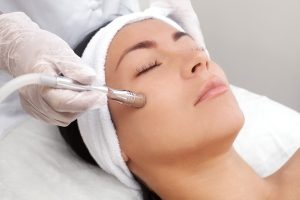If you are reading this article, you may have heard about such a procedure as dermaplaning. Even if you have not, you might still want to take care of your skin and seek the best ways for it.
Today, in the 21st century there are a lot of ways to improve your skin. From dozens of creams and moisturizers to some extraordinary treatments like light therapy. Dermaplaning is just another option for you, today we are going to tell you about it all the significant information you are looking for about it, and we will start by disclosing some facts and debunking myths.
| Myth | Fact |
| 😰After dermaplaning, regrown hairs will become darker and thicker | When you dermaplan, you shave off very fine hair called vellus hair. This hair is so delicate that shaving it will not affect how it will look when it grows out |
| 😲Dermaplaning is painful | If this procedure is done by a professional, it will be completely safe and painless |
| 🤨Dermaplaning at home is the same as in the clinic | If you’re doing dermplanning at home it might be dangerous for you. Next, we will describe this point in the detail |
What is Dermaplaning and how does it work

Dermaplaning or facial shaving is the process of removing dead skin cells and peach fuzz from the face with a scalpel at a 45-degree angle. This may sound scary to you, but we assure you that the procedure is not frightening at all.
Dermaplaning became especially popular during the Covid pandemic. CurrentBody, which stocks the most extensive selection of electrical health and beauty products globally, has seen a 58% uplift in its dermaplaning category since lockdown during the pandemic. So, how to dermaplane a face?
The technique of dermaplaning
- First, the skin should be thoroughly cleaned and allowed to dry, as wet skin can interfere with the movement of the blade.
- Dermaplaning uses a scalpel at a 45-degree angle, with the skin slightly taut during the procedure.
- The specialist removes dead skin cells and hair with light movements of the blade against the hair growth.
- After the treatment, the skin should be cleansed again to remove the residues of exfoliated cells and hair.
- Then you can apply an anti-inflammatory moisturizing serum based on hyaluronic acid, and then sunscreen.
7 Benefits of Dermaplaning
I bet dermaplaning benefits are wider than you expect. Otherwise, this treatment wouldn’t have become so popular in recent years, would it? Even though all the effects are cosmetic rather than medical, dermaplaning still does a lot for your skin. So, what can you expect?

- The facial exfoliation procedure is rejuvenating in nature. The removal of the top keratinized layer allows the cells to breathe and renew, making the skin look fresh and rested, and therefore more youthful.
- It prepares the skin for the application of makeup. When there is dead skin on the skin as well as peach fuzz, the products do not penetrate the skin as easily. Have you ever been annoyed by the way thin facial hairs stick up and out after applying foundation and powder? After this procedure, you’ll forget all about that inconvenience.
- Reducing the appearance of fine lines and wrinkles due to the new cells.
- This treatment serves as a deep cleansing of the face. After removing dirt, oil, and dead skin cells from your pores, they will be clearer and look smaller on your face. The first few days would be the best to focus on high-quality serums, moisturizers, and other elements of home skincare. Your face will be able to fully absorb all these treatments and get most of them.
- Fast results. Your skin will look like a new sheet of paper even after the first treatment. The results are also fast because dermaplaning takes very little of your time — 30-45 minutes.
- Dermaplaning suits all
Customer Experience
If you are still in doubt about whether dermaplaning is worth it, read customer reviews to allay your concerns. After that, you will have a better idea of what to expect and whether this procedure is right for you.
“I was a little nervous to try dermaplaning because I was worried about potential irritation, but my esthetician was very skilled and gentle. The process was quick and painless, and I noticed an immediate improvement in my skin. I could feel a slight tingling sensation during the procedure, but it wasn’t uncomfortable at all.
Afterward, my skin felt incredibly soft and smooth to the touch, and my makeup went on flawlessly. I also noticed that my skincare products seemed to absorb more easily into my skin, which was a pleasant surprise.”
— Charlotte, TX
“After the first dermaplaning session, I noticed an immediate improvement in the texture and tone of my skin. The treatment removed all of the unwanted peach fuzz, revealing a brighter and more even complexion. Not only that, but my makeup applied flawlessly after the treatment, which was an added bonus.
Also, since incorporating dermaplaning into my skincare routine, I’ve noticed a significant reduction in the frequency and severity of breakouts. I feel more confident and comfortable in my skin now than I have in years.”
— Jayden, CA
“I’ve struggled with dull, dry skin for years, but after getting dermaplaning I finally feel like I’m getting the glow I’ve been looking for. It’s amazing how much dead skin and debris can accumulate on the surface of your face without you even realizing it. Dermaplaning has definitely made a noticeable difference for me.
In addition, dermaplaning has also helped me achieve a smoother makeup application. Before, my foundation would often look cakey and uneven due to the rough texture of my skin. Now, it goes on much more evenly, which is a game-changer for my overall look.”
— Mae, AZ
Possible dangers & side effects

Despite all the benefits of dermaplaning, it is not a one-size-fits-all procedure. You should pay attention to such points while considering:
- Dermaplaning is not recommended if the skin is damaged or has active inflammatory elements, as the procedure may aggravate the situation.
- If the rules of antisepsis are not followed, infection is possible, because the skin, deprived of its protective barrier, is very susceptible to various microorganisms.
- If the procedure is abused and performed too often without allowing the skin to recover, compensatory hyperkeratosis can occur — the skin becomes coarser instead of the expected softness and tenderness.
- If the procedure is performed at home by an untrained specialist, it can cause the formation of scars on the skin.
- Anyway, you will have to repeat this procedure, because the result won’t last forever.
❗In addition, it is difficult to guarantee a successful result for anyone who is about to have dermaplaning. Everyone’s reviews vary so much that sometimes you can’t believe that these people have had the same procedure.
How often the procedure needs to be repeated
Even if dermaplaning has been performed perfectly accurately, without consequences or depth, it should not be used more than once a month. This interval is related to the timing of epidermal renewal.
Dermaplaning at home or in the clinic

We’ll be honest with you: no doctor would advise you to do dermaplaning at home. It can have negative consequences that overshadow all the benefits of the procedure.
When performed by a professional, the procedure is extremely safe and effective, and the sterile surgical blade helps remove the surface layer of dead skin, whereas home kits only sell blades that can get rid of hair. In addition, there is a risk of cuts and scars when performed at home by an untrained person.
But the matter of price can mean a lot for you, we got it. If you finally decided to do it at home, you should prepare yourself properly.
How to dermaplane at home?
- First things first, remove all the makeup and cleanse your face. Make sure it is dry before the procedure.
- You will need some razors. Or, you can use an electrical tool, then just turn it on.
- Start with holding a blade at a 45-degree angle and run the blade over the skin in short, light strokes.
- While dermaplane, hold your skin slightly taut with one hand.
- Try to keep the movements downward to avoid irritation. As you move, you will see dead skin cells and hair begin to accumulate.
- Take care not to touch inflamed or irritated areas, this can cause bleeding.
- Rinse your face with a mild cleanser and continue with your skincare routine.
Recovering after Dermaplaning
After dermaplaning, you should take care of your skin even more than previously. Your dead cells and dirt were another kind of skin barrier and that means, now it is as clean as subject to outside influence. Sometimes it can get drier since there is less barrier to preventing water loss. Be sure to use moisturizers and creams to keep this barrier.
Also, you need to stay away from AHAs and retinoids on freshly dermaplaned skin. Instead of them, look for a gentle cleanser and always protect your skin with .
During the first 3 days after dermaplaning doctors advise avoiding a few things:
- Direct sun exposure & extreme heat — the procedure makes the skin more sensitive and prone to burns;
- Scrubs or other exfoliators (for 1 week) — they can irritate or damage your “new” skin without safe barrier;
- Chlorine and swimming pools (also for a week) — chlorinated water is very drying and irritating to the skin, and after dermaplaning it is especially sensitive.
Dermaplaning vs Shaving: What is better?

Some people use the two procedures synonymously, and they are indeed similar in method. The difference is that a special scalpel is used for dermaplaning and a razor is used for shaving. In addition, the results that can be achieved with these procedures are also different.
What are the benefits of shaving? If just removing peach fuzz is enough for you, you can opt for it. But if you want to additionally remove dead skin cells as well, only dermaplaning, and by a qualified professional, will do it. At home, there is a high risk of scratching your skin with a sharp blade and introducing infection.
In short, dermaplaning provides much better exfoliation than shaving does.
Alternatives to Dermaplaning
If after everything you’ve read, dermaplaning doesn’t seem like the best choice for you, don’t worry. There are now many other alternative methods of hair removal, which we will tell you about below.
- Microdermabrasion. It is a procedure similar to dermaplaning and usually produces comparable results. Instead of a scalpel, microdermabrasion uses a roughened surface to smooth the skin. Microdermabrasion can last several months, but it may take several visits to get the results you want.

- Waxing. The first task of waxing is to remove unwanted and unsightly hair. There are 2 different types of wax: hard wax, which cures completely, and soft wax, which uses strips for removal. What is the experience of waxing? I would describe this service as a slight burning or tingling sensation. The pain is very short-lived. For a few hours after waxing, the client may be a little pink, which is quite normal. Although hair removal is the primary purpose of this service, waxing also naturally takes away some dead skin cells that are already ready to be removed.

- Threading. Simply put, threading is the process of removing peach fuzz from the face. A threading specialist uses a cotton thread that is folded in half, twisted, and rolled. With feathery snaps, the thread grabs and holds several hairs at once. They then pull the hair right out of the follicle. It takes about 15-20 minutes if you do the whole face procedure. Fans of thread removal say it’s the best alternative to waxing because hair grows back more slowly. But, threading is a tedious and painful process.
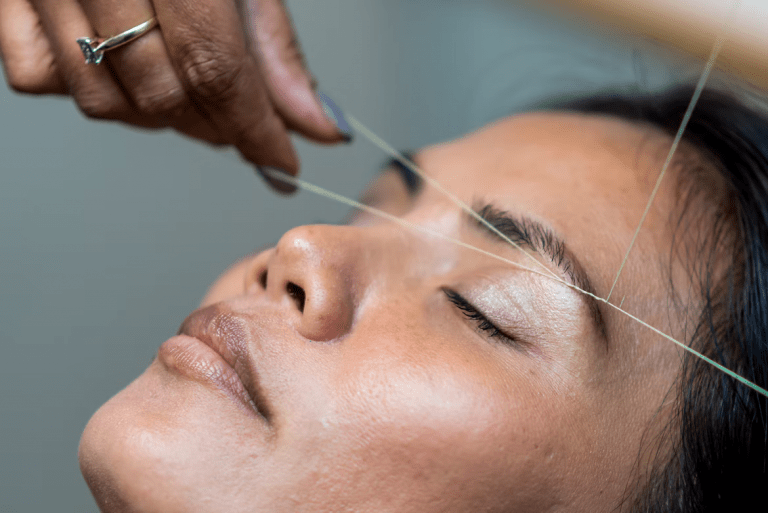
- Tweezing. Tweezing involves using a tweezer to pluck the hair out from the surface. This procedure is usually used to pluck eyebrows, so you can’t say it’s a full-fledged alternative to dermaplaning. Tweezing by itself is not a very effective way to remove facial hair, because the hairs are removed individually.
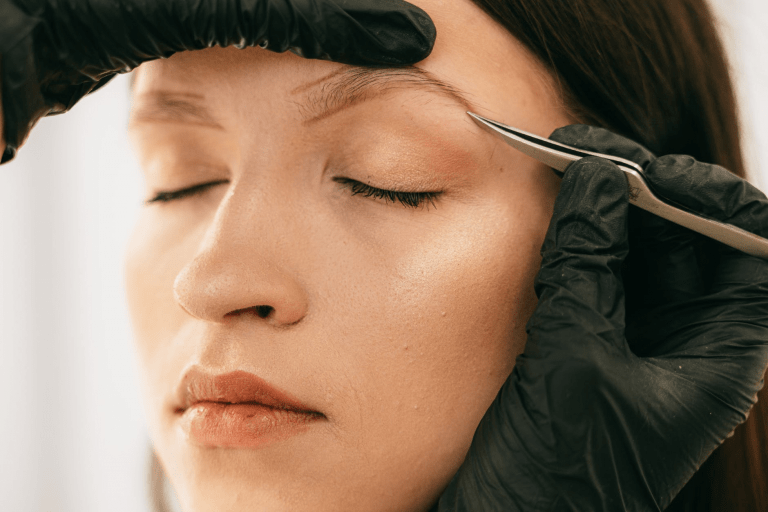
- Sugaring. Sugaring involves using a paste made of sugar, lemon, and water to gently remove hair. It is similar in consistency to wax. But the similarity is only in the consistency. The difference is the removal of a thin top layer of skin. It is made by hand and is removed with one movement of the hand. By the way, it hurts less than waxing.
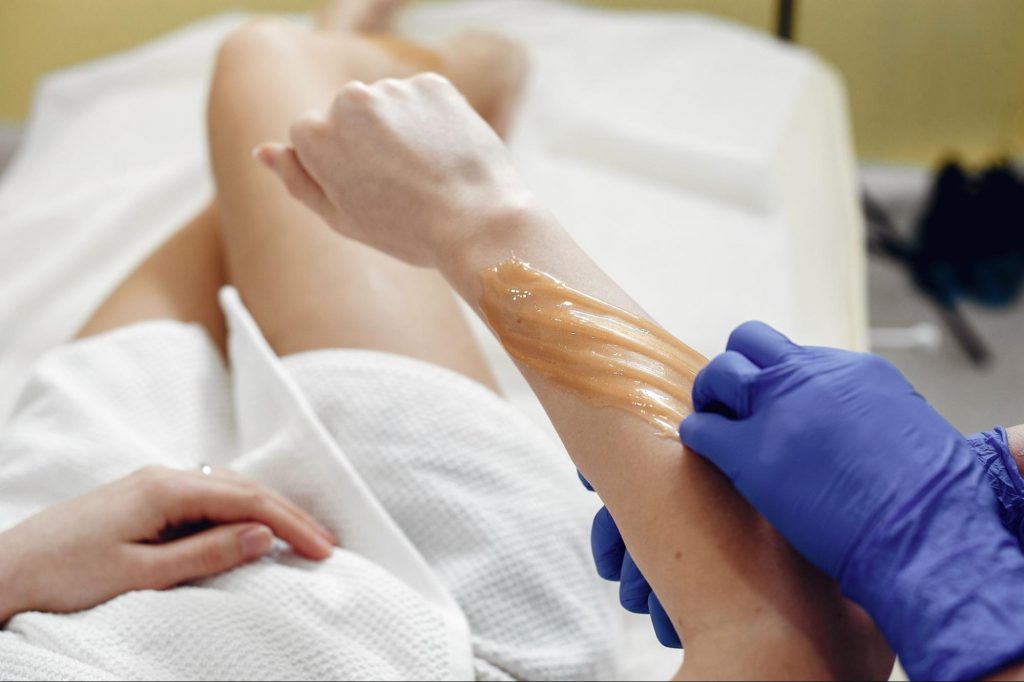
- Laser Hair Removal. The laser is used to remove the hair pigment by destroying the hair follicle. It damages it and kills it. It is mainly used for hair on the lips and in the chin area but can be used everywhere. With 5 or 6 sessions of it, you can reach permanent hair removal. It is quick and not painful, but it is also pricey. However, you can do it by yourself with a special device.
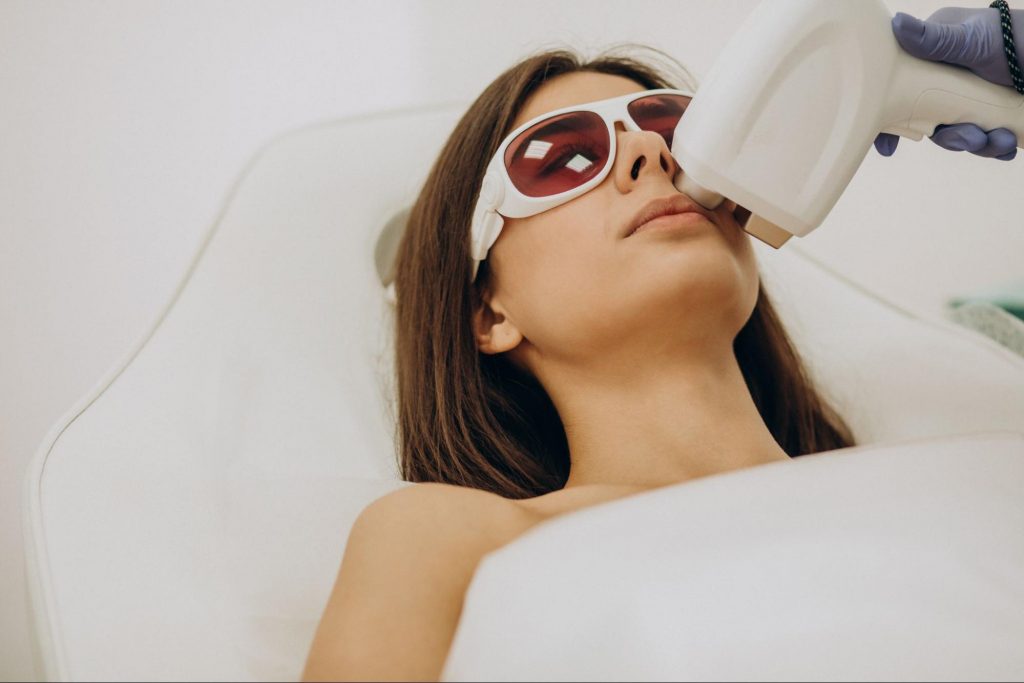
- Electrolysis. This is one of those methods that can provide permanent hair removal. The process is as follows: a needle is inserted into the hair follicle, which is destroyed by an electric current at the micro-level. But the needle must be placed in each hair follicle that you want to destroy. The destroyed hair will loosen and then be removed with tweezers. But it may take several treatments to completely destroy a hair follicle. Many of them will remain alive. The pro is, that it fits all the parts of the body and skin types.

Summary
And yet, to do dermaplaning or not? This is a question that only you can answer. The definite advantage of dermaplaning is that it removes dead skin cells and makes your skin look younger. However, there are plenty of downsides and possible dangers to it as well. That’s why we also advise taking care of your skin with other, more gentle methods, such as light therapy.
We strongly recommend that you seek the advice of qualified professionals if you decide to dermaplan your face. As with any other such procedure (for example, from our list of alternatives), doing it yourself at home can only worsen the condition of your skin. And we wish you nothing but the best!
FAQ
👎What are the disadvantages of dermaplaning?
If the rules of antisepsis are not followed, infection is possible, as the skin, deprived of a protective barrier, is very susceptible to various microorganisms. Compared to other hair removal procedures, dermaplaning can be more expensive. You will have to repeat the procedure, as the results will not last forever.
🥰Does dermaplaning improve the skin?
Yes, it does. The removal of the top keratinized layer allows the cells to breathe and renew, making the skin look fresh and rested, and therefore more youthful.
⌛How often should you dermaplane?
Doctors advise repeating dermaplaning once a month. This interval is related to the timing of epidermal renewal.
😱Does dermaplaning make hair grow back thicker?
No, it’s a myth. When you dermaplan, you shave off very fine hair called vellus hair. This hair is so fine and delicate that shaving it will not affect how it will look when it grows out.
💭Is dermaplaning better than shaving?
If just removing peach fuzz is enough for you, you can opt for shaving. But if you want to additionally remove dead skin cells as well, only dermaplaning, and by a qualified professional, will do it.
